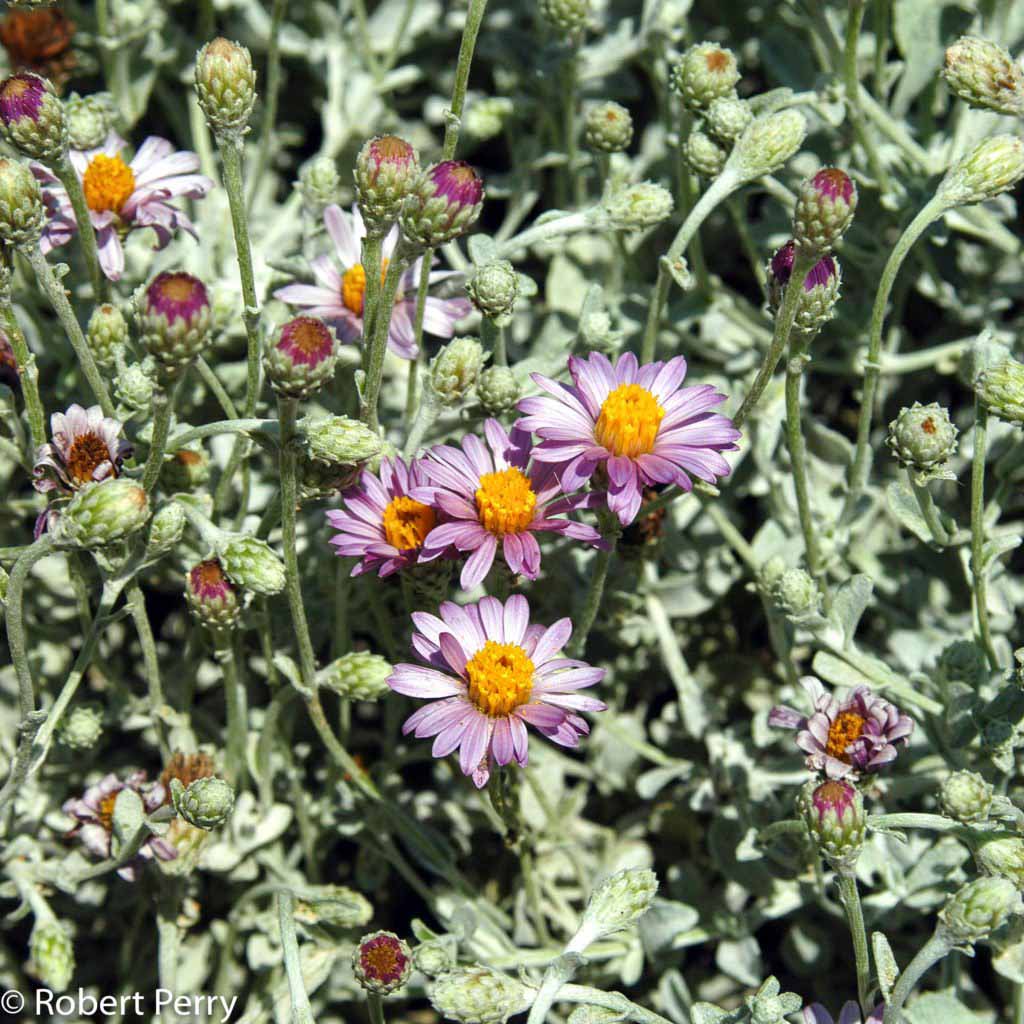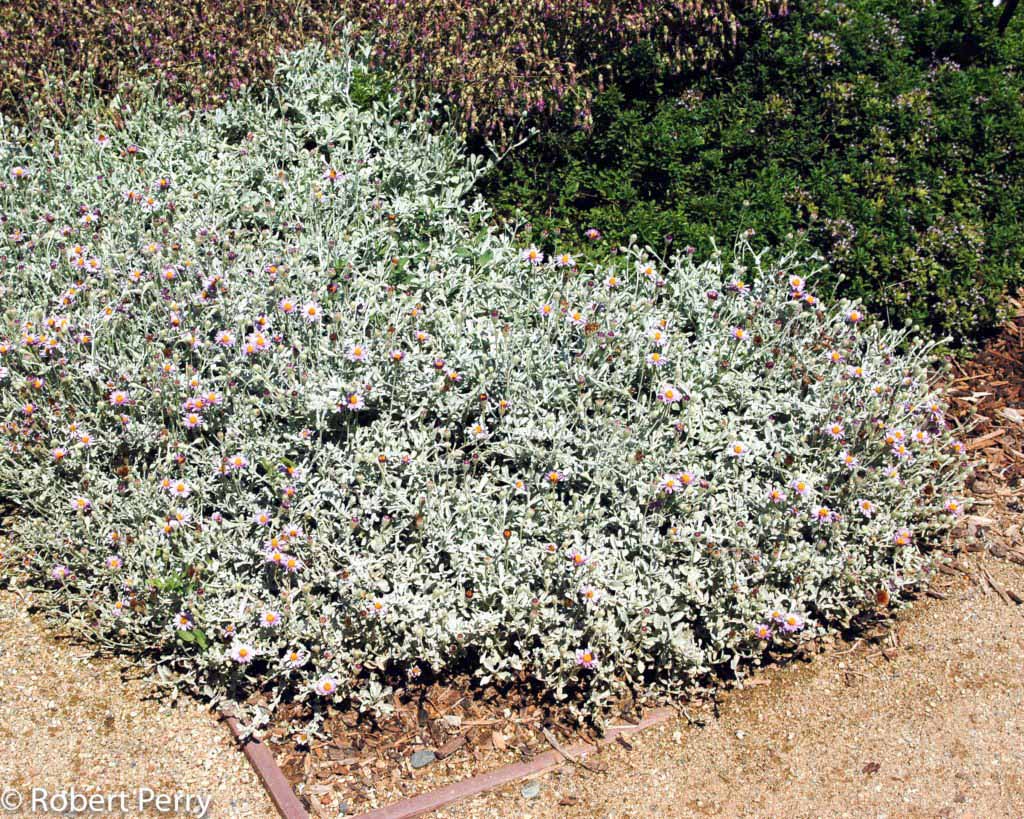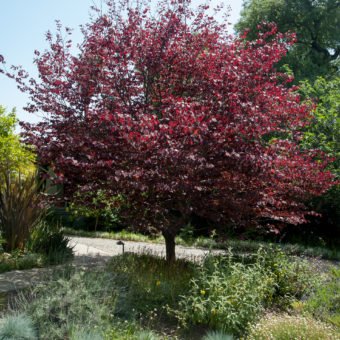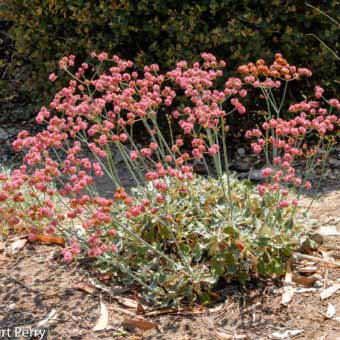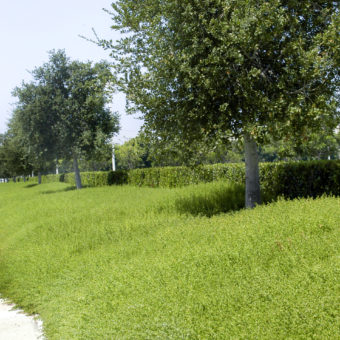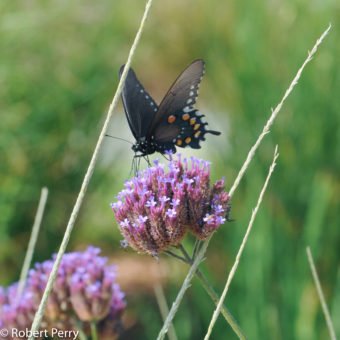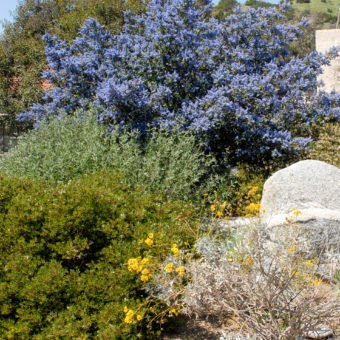The California aster is a very low growing perennial with silvery gray-green leaves and bright pink daisy-type flowers. Its naturally occurs in coastal, foothill and valley habits in many parts of California where it proves to be a tough and adaptable species to sun and summer drought with a loose and scraggly habit. In comparison to plants found in nature, the cultivar L. f. ‘Silver Carpet’ will provide consistent growth to 4 in. high, 2- 3 ft. wide with a dense habit with the addition of low amounts of summer water. It has been introduced into cultivation for use as a bank and mixed perennial border plant among other California natives, and to attract butterflies.
Silver carpet aster
Lessingia filaginifolia ‘Silver Carpet’
Description
Plant properties
Water needs
Maintenance
Commercial sites
Plant Type: Ground cover, Perennial
Foliage Character: Evergreen
Habit: Spreading, Dense, Compact
Growth Rate: Moderate
Foliage Color: Silvery white
Flower Color: Pink
Flower Season: Summer
Soil Adaptations: Well-draining soil, Clay
Exposure Adaptations: Heat, Drought, All day sun
Function: Borders, Banks, Attracts butterflies, Small spaces, Foliage accent plant, California native
Height: 4 in.
Width: 2 ft. – 3 ft.
Foliage Character: Evergreen
Habit: Spreading, Dense, Compact
Growth Rate: Moderate
Foliage Color: Silvery white
Flower Color: Pink
Flower Season: Summer
Soil Adaptations: Well-draining soil, Clay
Exposure Adaptations: Heat, Drought, All day sun
Function: Borders, Banks, Attracts butterflies, Small spaces, Foliage accent plant, California native
Height: 4 in.
Width: 2 ft. – 3 ft.
Watering Schedule: Low 1
For most situations, we recommend watering deeply every 3-4 weeks after establishment.
Learn how to apply this watering schedule to your landscape on our How to water waterwise and California native plants page.
Important Notes
- These are general guidelines. Always observe and adjust as necessary for your landscape.
- If it rains over 1” you will likely not need to water for at least another 3-4 weeks. Before watering again, check the soil. It should be significantly dry at least 4” below the soil surface before watering.
- If you have a “smart timer” or weather sensitive irrigation controller, it is best not to use the automatic weather adjusting features for plants in this category. While very useful for watering higher water demanding plants, those in this category have natural drought adaptations which mean they do not need to be watered more in warm weather. Using the weather adjusting features will result in either overwatering in summer or underwatering in fall and spring.
- It is important to group plants with the same water needs together in the landscape to avoid needing to over or under water plants when running your irrigation system.
Silver Carpet Aster goes semi-dormant in summer, and will look a bit dried up. It’s not necessarily dead, dying, or under watered. Do not try to water it until it looks lush in the middle of summer as you may over water and kill it. Allow for the seasonal “down time,” and look forward to it growing vigorously again when it is ready. Only plant it in locations where you are happy to accept the summer dormant look of it. In it’s growing season it is a beautiful little groundcover full of flowers that attract butterflies – I think it is worth it. For a cleaner and more compact look, cut back part-way annually, in early fall just as the plant is coming out of or is about to come out of dormancy (S).
References
Sign Up For Free
To access all the features of this website, please create an account with us. Privileges include:
- Ability to print plant groups, lists and plant profiles
- Create your own plant groups
- Receive monthly updates by email
An online resource for you to learn about and choose the best plants for your inland Southern California landscape.
Promoting water conservation through education, stormwater capture, waterwise landscapes, and other initiatives.
We provide programs, services, and resources to serve audiences of all ages to cultivate a community-wide conservation ethic and build regional capacity for water resilience.
